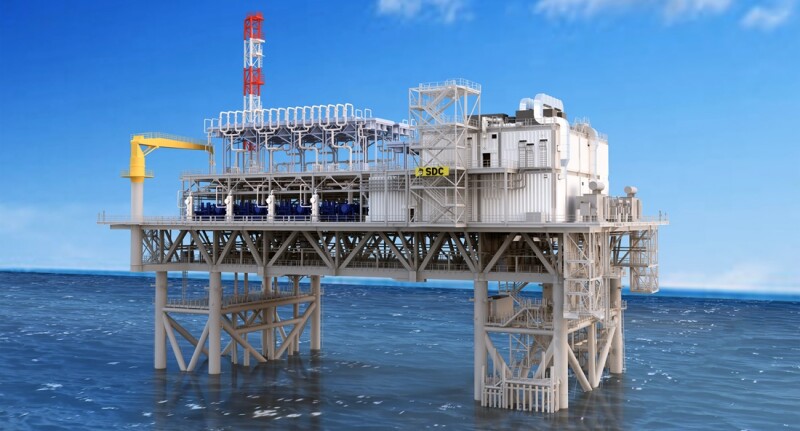Italy’s Saipem has won a $600 million contract for Phase 3 of the $2.9 billion BP-operated Shah Deniz Compression (SDC) project intended to extend the life of Azerbaijan’s offshore gas production in the southern Caspian Sea by tapping into low-pressure reserves.
The contract taps Saipem to handle transportation and installation of an unmanned, electrical-powered, 19,000-ton compression platform 3 km from the existing Shah Deniz Bravo (SDB) platform in 85 m water depth.
Four 11-MW compressors installed on the platform will compress low-pressure gas from the Shah Deniz Alpha and Bravo platforms, which will then flow to Azerbaijan’s onshore Sangachal terminal for processing and export.
EPCI and Subsea Works
Saipem will also handle engineering, procurement, construction, and installation (EPCI) for approximately 26 km of offshore pipelines to connect the new compression platform to existing facilities and complete major permanent subsea works, the company noted in a 15 October news release.
In addition to Saipem’s award, SOCAR affiliates BOS Shelf LLC and BOS Shelf International FZCO will share in another $100 million in contracts, Saipem said. Activities are expected to commence in the third quarter of 2026 with pin pile installation, according to BP, which holds a 29.99% operator interest in Shah Deniz with partners Russia’s Lukoil (19.99%), Turkey’s TPAO (19%), the Southern Gas Corridor upstream holding, the Iranian National Oil Company, Socar, and Hungary’s MVM.
The project’s first gas is expected flow to the compressor platform from the Shah Deniz Alpha platform in 2029 with flows from the Bravo platform scheduled to start in 2030, boosting the field’s production by an additional gross 50 Bcm of gas and 25 million bbl of condensate, BP said.
Saipem says it will manage the main vessels to be used in the project — the subsea construction vessel Khankendi, owned by the Shah Deniz consortium, and the pipelay barge Israfil Huseynov, owned by the Azerbaijan Caspian Shipping company. Local naval assets will also be employed.
Contracts will be executed under an existing 3-year, extendable framework agreement announced in July.
Attention to Details
The project also involves:
- Subsea pipelines linking compression platform to existing infrastructure
- Power and fiber-optic connections from Sangachal terminal to SDC platform
- Backup interconnector cable linking the SDB and SDC platforms
- Upgrades at the Shah Deniz Alpha and Bravo platforms and Sangachal terminal facilities, including electrification projects at Sangachal that aim to reduce emissions.
In February, Reuters reported that BP also plans to add six new wells to the existing 21in operation at Shah Deniz, quoting BP’s vice president for the Caspian region, Bakhtiyar Aslanbayli as saying that the additional wells “will help maintain a plateau for several years.”
Aslanbayli told Reuters that Shah Deniz output increased to approximately 28 Bcm in 2024 from approximately 26 Bcm in 2023. Current output averaged 76 million m3/D while the field’s total capacity was 79 million m3/D.
Azerbaijan agreed in 2022 to double its gas exports to Europe to at least 20 Bcm by 2027 with Shah Deniz—which has started showing first signs of decline this year after more than 2 decades in production—largely the source of that gas.


